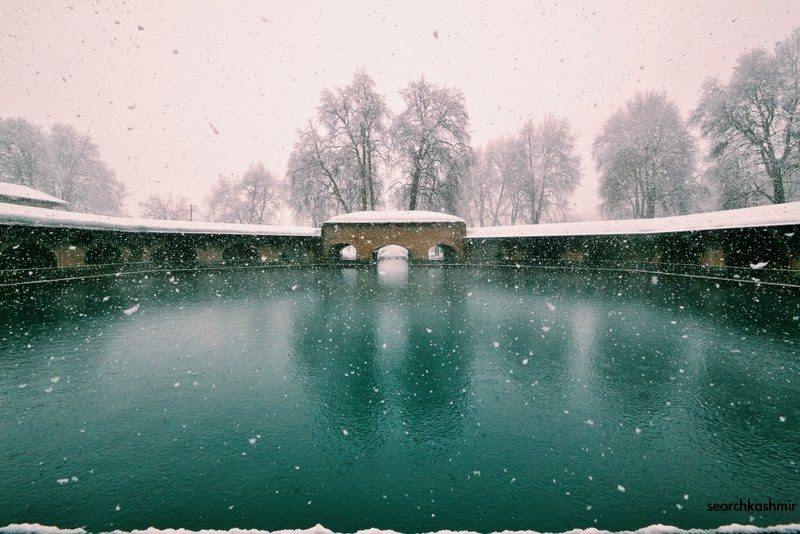Agar kahat ul rijal uftad, azeshan uns kamgiri
Eke Afghan, doyam Kamboh soyam badzat Kashmiri |
Although a scarcity of men should happen, do not cultivate the acquaitance of these three people:
the 1st, an Ufghan, the 2nd, a Kumboh, and the 3d, a wicked Kushmeerian.
— ‘A collection of proverbs, and proverbial phrases’ (1824) by Thomas Roebuck (1781-1819), Part I. p. 99 [Extracted from Shahid-i-Sadiq]
Complete saying is supposed to have following additional lines [unverified/untranslated]:
Ze Afghan hila bhi ayad, ze Kamboh kina bhi ayad,
Ze Kashmiri nami ayad bajuz andoho dilgiri ||
Probable transliteration:
If a deceptive Afghan comes
If a tyrannical Kamoh comes
If an infamous Kashmiri comes
Nothing except sorrow follows
-0-
Other variations:
Agar khalal mardan ufad, az inan na bagiri: yakam Pathan, duyam Kamboh, seyam badzat Kashmiri
If mankind should be coming to an end, do not select (for its restoration) first the Pathan, secondly the
Kamboh, thirdly the rascally Kashmiri.
– ‘Eastern Experiences’ (1871) by Lewin Bentham Bowring, pp.274
Agar kaht-i-mardurn uftad, az ín sih jins kam gírí; Eki Afghán, dovvum Sindí, siyyum badjins-i-Kashmírí
Though of men there be famine yet shun these three First the Afghan, second Sindi, thirdly the rascally Kashmiri.
– Arabian Nights by Richard F. Burton, Vol. 10, pp. 178-219
If folk be scarce as food in dearth ne’er let three lots come near ye: First Sindi, second Jat, and third a rascally Kashmeeree.
– Arabian Nights by Richard F. Burton, Vol. 6, pp. 156
Better have no friends at all than take up with an Afghan, a Kamboh, or a rascally Kashmiri
– A meaning given in The People Of India (1908) By Herbert Hope Risley, William Crooke
-0-
Other oriental quotes on “Rascally” Kashmiri:
If you find a snake don’t kill it;
but if you find a Kashmiri it is another matter
~ Indian memories (1915) by Robert Baden-Powell. Another one from it:
Many chickens in a house befoul it:
many Kashmiris in a country spoil it
-0-
Kashmiri bas Kashmiri guft
Kash miri ki man khalas shavam
Kashmiri desires the destruction of his fellow countryman
~ Kashmiri Pandits by Pandit Anand Koul, 1924.
-0-
“a snake in his morals and a fowl in his manners”
The Kashmiri bears an evil reputation in the Panjab, and indeed through-out Asia. Proverbs liken him to a snake in his morals and to a fowl in his manners, and men are warned against admitting a Kashmiri to their friendship. Moorcroft writes of the Kashmiri, ‘ Selfish, superstitious, ignorant, supple, intriguing, dishonest and false, he has great ingenuity as a mechanic and a decided genius for manufactures and commerce; but his transactions are always conducted in a fraudulent spirit, equalled only by the effrontery with which he faces detection;’ and Drew admits that they are ‘ false- tongued, ready with a lie, and given to various forms of deceit.’ Hugel has nothing good to say of the Kashmiris, and it is a matter of history that in the Mutiny the Kashmiris of Ludhiana turned against the English, and in the Settlement Report of the Kangra district the Kashmiris of Nurpur were spoken of unfavourably by Mr Barnes. But it must be remembered that Moorcroft was speaking of the city people, and that the Kashmiris of Ludhiana and Kangra were the shawl-weavers, who are the lowest and meanest of the population, and it would not be fair to apply Moorcroft’s epithets to the villagers as a body. He admits, too, that the vices of the Kashmiris are not innate, but are due to the government under which they lived. ‘ The natives of Kashmir have always been considered as amongst the most lively and ingenious people of Asia, and deservedly so.
~ The valley of Kashmir (1895) by Sir Walter Roper Lawrence.
-0-
Update:
Some more. These from Seir Mutaqherin: or a View of Modern Times, being a History of India from the year 1118 to 1195 of the Hedjirah. From the Persian of Gholam Hussain Khan, V1-4. 1789. A history pf Muslim nobel families of Bengal. Translated by Nota Manus alias Raymond alias Haji Mustapha, a French-born Muslim convert.
Cashmiri, bi Piri; Bengallee, Djendjali. The Cashmirian acts as an Atheist ; but the Bengallee is always one from whom there is no disentangling one’s self.
and one directed at Kashmiri women
Cashmiri, bi Piri ; ne Lezzet, ne shiri. The faithless Cashmirian affords neither taste nor flavour.
-0-
Update:
From the book “Kashir” (1947) by G.M.D Sufi



















